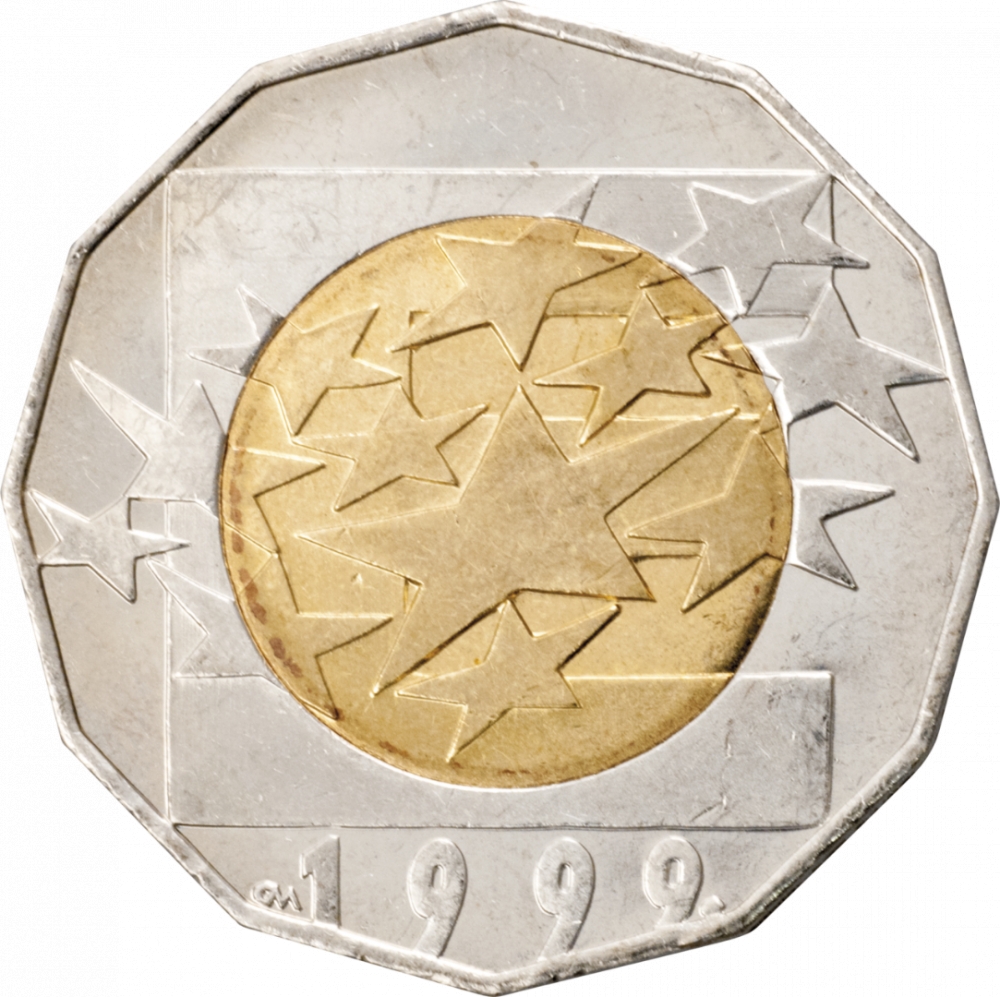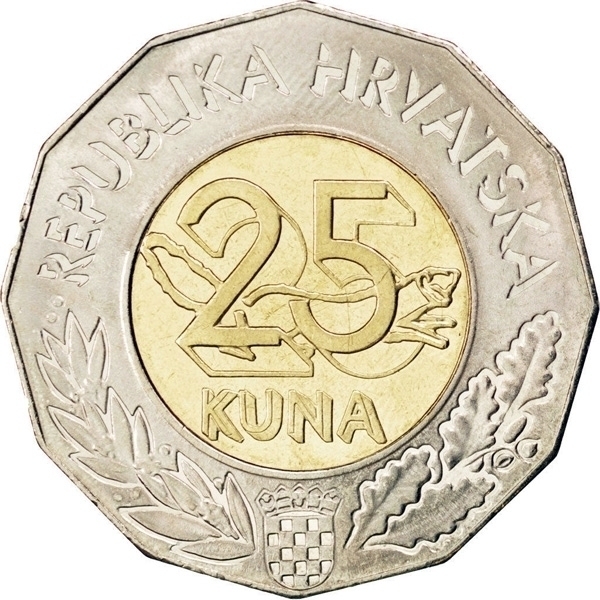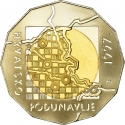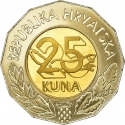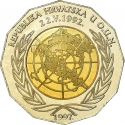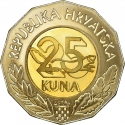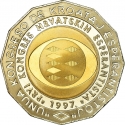You are about to finish your registration. Please check your mailbox (including spam folder). There should be a letter with a confirmation link. Check setting to make sure that your e-mail address is correct.
Send letter againDescription
The coin commemorates the introduction of the new monetary unit, the euro, in eleven European Union Member States.
The name "euro" was officially adopted in Madrid on 16 December 1995. Belgian Esperantist Germain Pirlot, a former teacher of French and history is credited with naming the new currency by sending a letter to then President of the European Commission, Jacques Santer, suggesting the name "euro" on 4 August 1995.
The currency was introduced in non-physical form (traveller's cheques, electronic transfers, banking, etc.) at midnight on 1 January 1999, when the national currencies of participating countries (the eurozone) ceased to exist independently. The euro thus became the successor to the European Currency Unit (ECU).
Release date: 29 December 1999
Designer: Damir Mataušić
Obverse

|
In the central part, it is written capital letter E (from Euro). Over the letter, there are 12 different stylized stars dispersed. That is the symbol of European Union. Under the letter, there is written the year of minting and on the left side of the year is written the signature of engraver (DM). E |
|---|---|
Reverse

|
The central part of the coin's core carries the designation of the nominal value 25. Within the numeral outlines, the figure of a pine marten running towards the right is shown; the marten's body is integrated with the numeral denoting the nominal value. In the bottom, central part of the coin's ring the coat of arms of the Republic of Croatia is impressed. A blooming laurel branch is placed in a semicircle on the left to the coat of arms, while a common oak branch with fruits is on the right. The top part of the ring carries the semicircular inscription The Republic of Croatia. REPUBLIKA HRVATSKA |
| Edge |
Characteristics
| Type | Commemorative Issue (Circulating) |
| Material | Copper Aluminum Nickel |
| Weight | 12.75 g |
| Diameter | 32 mm |
| Thickness | 2.2 mm |
| Shape |
|
| Sides | 12 |
| Alignment | Medal |
| Mint |
Croatian Monetary Institute (HNZ)
|
